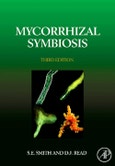The roots of most plants are colonized by symbiotic fungi to form mycorrhiza, which play a critical role in the capture of nutrients from the soil and therefore in plant nutrition. Mycorrhizal Symbiosis is recognized as the definitive work in this area. Since the last edition was published there have been major advances in the field, particularly in the area of molecular biology, and the new edition has been fully revised and updated to incorporate these exciting new developments.
Please Note: This is an On Demand product, delivery may take up to 11 working days after payment has been received.
Table of Contents
Section 1 Arbuscular Mycorrhizas 1. The Symbionts Forming Arbuscular Mycorrhizas 2. Colonization of Roots and Anatomy of Arbuscular Mycorrhizas 3. Genetic, Cellular and Molecular Interactions in the Establishment of Arbuscular Mycorrhizas 4. Growth and Carbon Economy of Arbuscular Mycorrhizal Symbionts 5. Mineral Nutrition, Toxic Element Accumulation and Water Relations of Arbuscular Mycorrhizal Plants
Section 2 Ectomycorrhizas 6. Structure and Development of Ectomycorrhizal Roots 7. Ectendo- and Arbutoid Mycorrhizas 8. Growth and Carbon Allocation of Ectomycorrhizal Symbionts 9. Nitrogen Mobilization and Nutrition in Ectomycorrhizal Plants 10. Phosphorus and Base Cation Nutrition, Heavy Metal Accumulation and Water Relations of Ectomycorrhizal Plants
Section 3 Ericoid, Orchid and Mycoheterotrophic Mycorrhizas 11. Ericoid Mycorrhizas 12. Mycorrhizas of Green Orchids 13. Mycorrhizas in Achlorophyllous Plants (Mycoheterotrophs) 14. Fungal Symbioses in Lower Land Plants
Section 4 Functioning of Mycorrhizas in Broader Contexts 15. The Roles of Mycorrhizas in Successional Processes and in Selected Biomes 16. Mycorrhizas in Ecological Interactions 17. Mycorrhizas in Agriculture, Horticulture and Forestry








